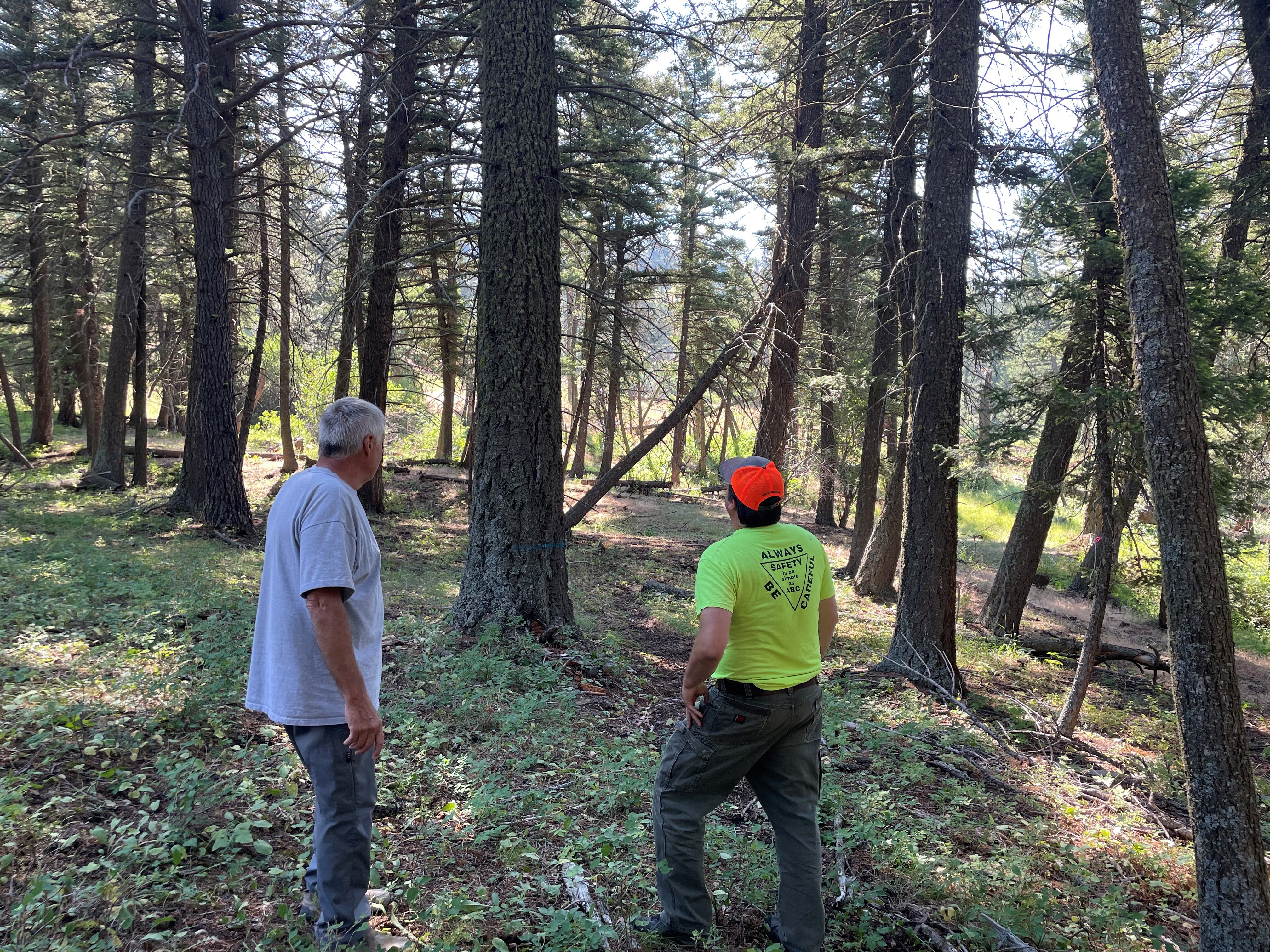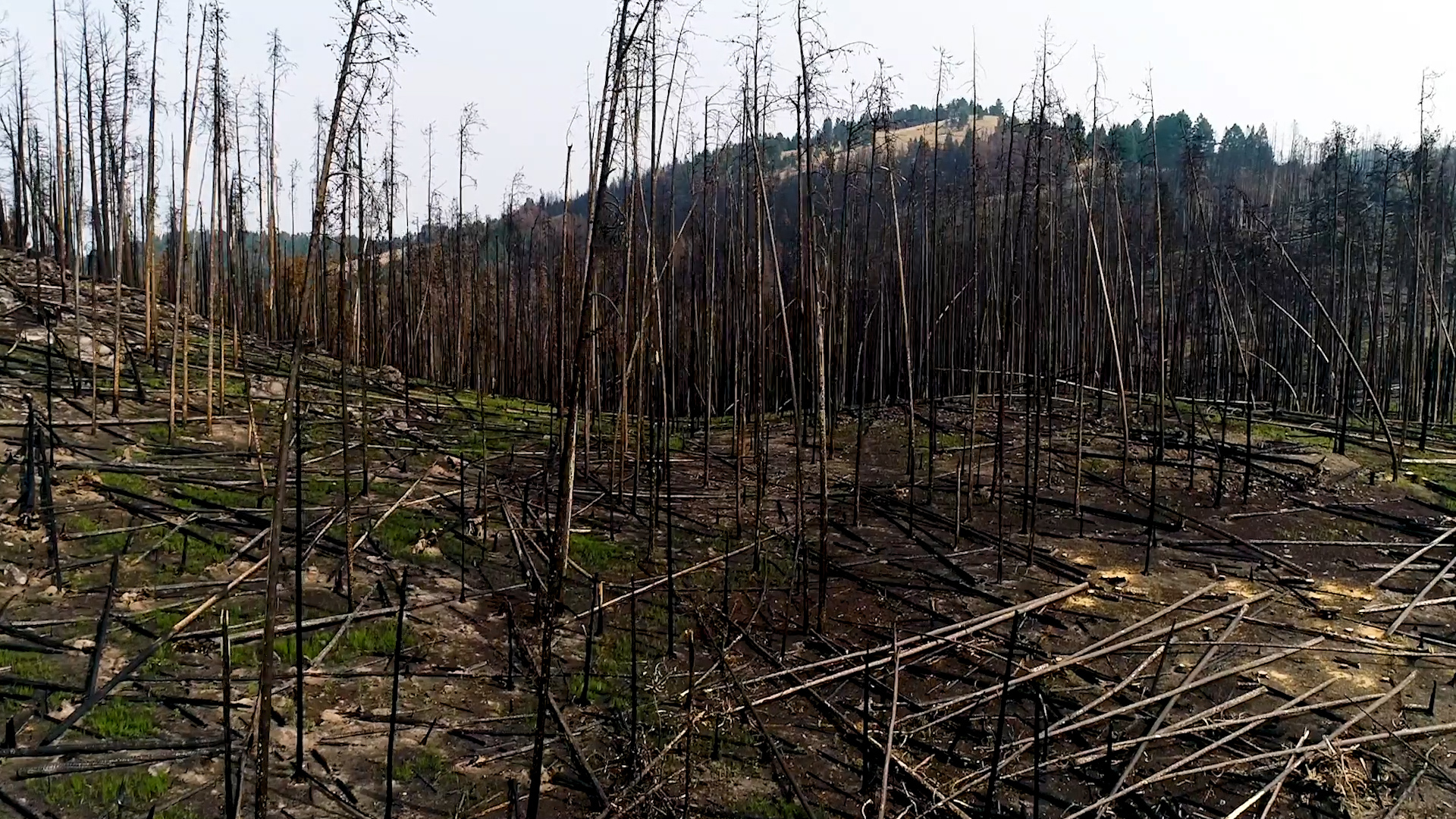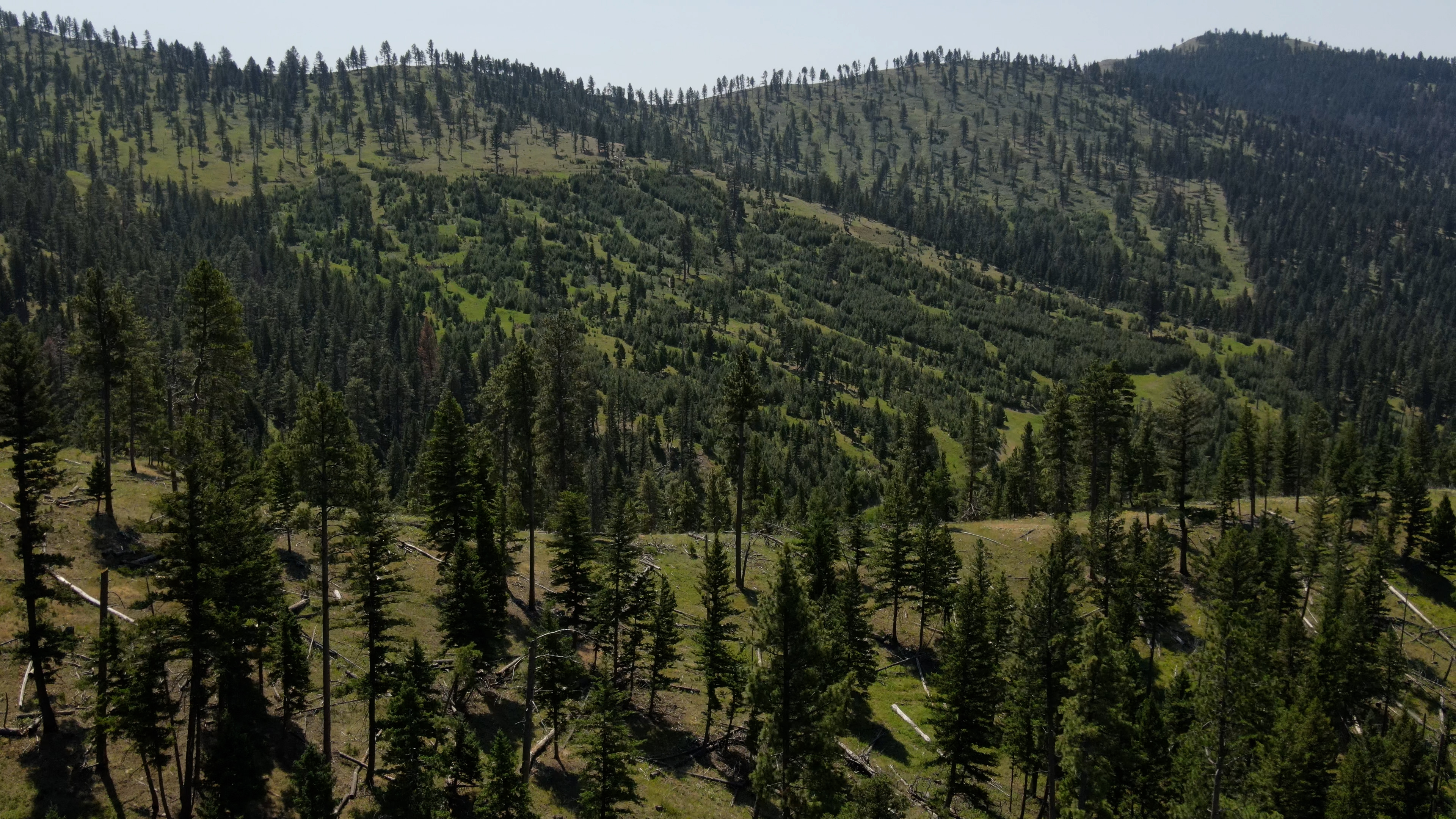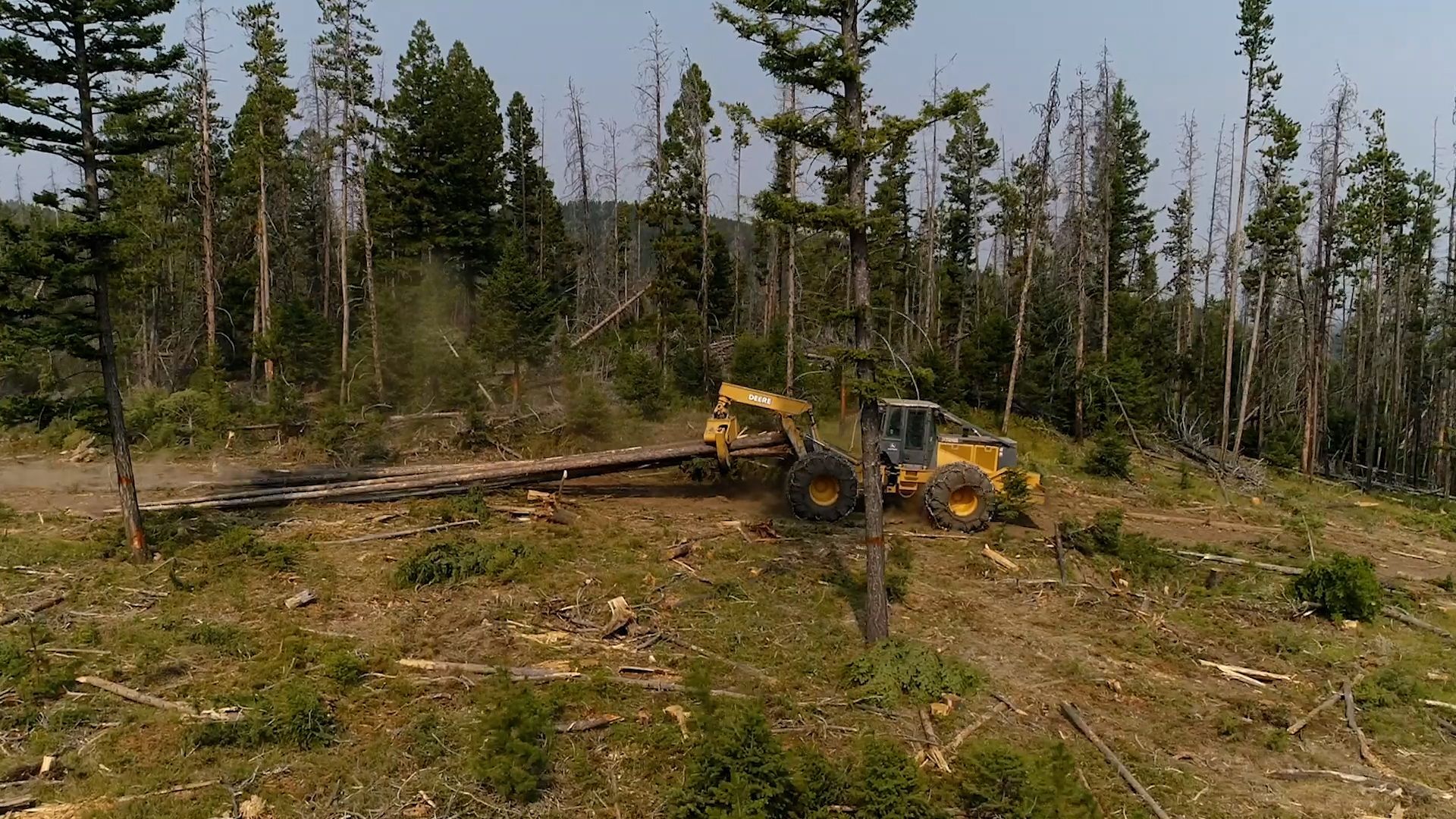
Catastrophic wildfires are one of the most detrimental events forests face. Unlike low or mixed-intensity fires, large-scale wildfires burn at an extremely high temperature, destroying everything in their path. The temperature and speed at which these fires spread make them extremely difficult to contain and can cause extensive damage to soil, water, and wildlife habitat. Forest management practices such as thinning and prescribed burns are an essential part of preventing catastrophic wildfires and minimizing damage.
Every forest is different and requires unique treatment methods, varying from clear-cuts to salvage treatments to unmanaged wilderness areas. By adjusting treatment methods to fit the requirements of each given stand, we can help mimic the benefits of low-severity or mixed-severity wildfires and prevent catastrophic wildfires.
Risk Reduction
Reducing the risk of catastrophic wildfires is often a top priority for forest managers and landowners alike. While we do not want to prevent all wildfires, minimizing the risk of high-severity fires is crucial to protecting our communities, wildlife, water quality, and air quality. According to the American Forest Resource Council, "Proven, science-based forest management tools like logging, thinning, and controlled burns reduce excessive vegetation that fuel catastrophic wildfires."

Watershed Protection
According to the U.S. Geological Survey (USGS), "Wildfires can compromise water quality both during active burning, and for months and years after the fire has been contained." Mechanical thinnings are an excellent way to avoid catastrophic wildfires, thereby preventing erosion and runoff caused by high temperatures and vegetation loss.
Forest managers take special precautions to protect our natural resources during treatments. As stewards of our forests, there are many ways that forestry professionals can protect our waterways. Montana Forestry's Best Management Practices and Streamside Management Zone Laws were both put into place to help guide foresters, loggers, and landowners on how to "minimize non-point water pollution from forest practices." These guidelines help reduce the impact of treatments, all while preventing the irrevocable damage that follows after catastrophic wildfires.
Maintain and Protect Habitat
Catastrophic wildfires can also be detrimental to wildlife habitat. These types of fires alter the landscape entirely for many years or even decades to come. On the other hand, mechanical treatments allow forest managers to carefully select trees for removal, reducing the risk of high-intensity fires while paying special attention to protecting wildlife habitat.
Over the years, foresters have learned and adapted practices specifically to protect habitat and create diverse forests that support a wide array of different species. For example, forest managers have discovered that small mammals and birds thrive in areas that contain standing dead trees called "snags." John Ottman of Ottman Forestry Consultants explains how our perspective has shifted when it comes to forest management and wildlife habitat considerations:
"Everyone thinks active forest management is always about growing this perfectly green forest. You have to have a mosaic of forests. The more mosaics you have, the more wildlife, the more birds, the more grasses, forbs, and shrubs."
What Ottman describes as a "mosaic" of forests refers to the natural diversity that occurs across a forested landscape. Forest managers can promote diversity by mimicking the natural thinning that occurs during low-intensity forest fires. By utilizing diverse treatment techniques for any individual stand, we can protect and provide optimal habitat for many different species.

Providing Access
Another way forest management professionals can help prevent catastrophic wildfires and restore forests after fire involves road access. According to the American Forest Resource Council:
"Renewable products from federal lands generate millions of dollars to maintain forest roads [...] These public roads continue to support a wide range of outdoor recreational activities to this day. These roads also provide vital access for firefighters and first responders, as well as safe evacuation routes for local communities and public lands users during emergencies."
Additionally, forest management professionals can help remove "hazard trees" surrounding roads and recreation areas. Removal of "hazard trees," or dead or dying trees, is often necessary treatment after a wildfire strike in a wildland-urban interface, as fires can threaten the strength and integrity of a tree.

The Forest Products Industry's Role
Providing infrastructure is an integral part of the forest treatment process. Without the mill infrastructure provided by the forest products industry, treatment may no longer be economically viable for both private and public landowners.
The forest products industry works hand-in-hand with forestry professionals to create healthy, sustainable forests. Those mills rely on a constant supply of timber and believe in bolstering the long-term viability of our forests. Together, with the help of our forestry professionals, we can create diverse forests that provide clean air, wildlife habitat, recreational opportunities, and sustainable forest products for generations to come.
